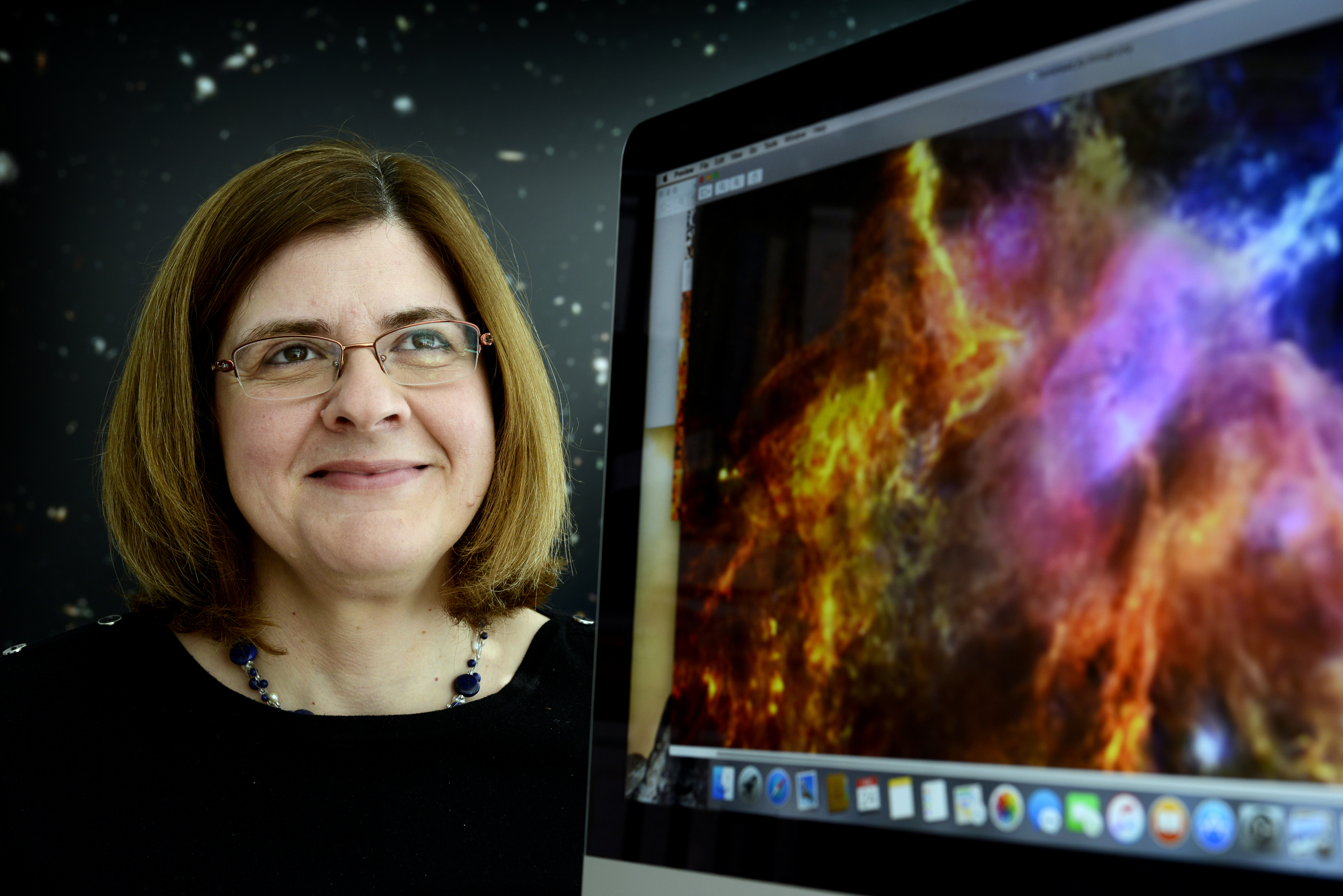Professor Dimitra Rigopoulou
-

Academic Positions
Nicholas Kurti Senior Research Fellow
Professor of Astrophysics, University of Oxford
Visiting Hasselblad Professor, Chalmers, Sweden
Senior Research Fellow, Institute for Astronomy, FORTH, GreeceQualifications
BSc (Ioannina), DPhil(London), MA(Oxford)
Academic Background and Previous Positions
I grew up in Greece where I studied for my Bachelor’s Degree in Physics. Upon completion, I moved to the UK where I obtained a Master’s in Astrophysics followed by a DPhil in Astrophysics from Queen Mary College, University of London. In 1995 I moved to Germany to work at the Max Planck Institute for Extraterrestrial Physics (MPE) in Garching, near Munich. I returned to the UK in 2003 to take up a position in Astrophysics at the University of Oxford, where I have been ever since.
Previous Positions:
1995-1998 : Postdoctoral Research Assistant, MPE, Garching, Germany
1998-2003 : Staff member, MPE, Garching, Germany
2003-2008: Leverhulme Fellow, University of Oxford
2008-2014: Research Lecturer, University of Oxford
2008 -present: Senior Research Fellow, Rutherford Appleton Laboratory (RAL), STFC, UK
2014 - present: Professor of Astrophysics, University of Oxford
Undergraduate Teaching AreasAll of 1st and 2nd year Physics Undergraduate Syllabus
Graduate Teaching Areas
Astrophysics
Research Interests
My primary interests are on star-formation and galaxy evolution. Molecular gas is the prime ingredient for star formation however, the way each galaxy uses its gas varies dramatically from galaxy to galaxy. It is not yet known what determines the rate of star formation. I am particularly interested in a class of galaxies called Luminous Infrared Galaxies. These objects are like `lighthouses' as they display the most extreme star-forming activity in the Universe. For my research I use both imaging and spectroscopic techniques. I am interested in spectral signatures that allow me to investigate sites of intense star-forming activity, the presence of an Active Galactic Nucleus (a black hole) and how the two phenomena co-exist and often interact in the same galaxy.
For my work I make use of ground-based telescopes like those in the Atacama desert in Chile (ALMA) and also space based satellites. So far, I have worked with a number of satellites launched by ESA and NASA and I am extremely excited to work with data from the James Webb Space Telescope, due for launch in late 2021.
Publications
Astrophysics Data System - Professor Dimitra Rigopoulou
Other
I am keen to get others interested in Astrophysics and Science in general, and, to share the latest scientific (astrophysical) results with the wider public. I often give talks to schools, societies and science fairs.
Email
Links
https://www.physics.ox.ac.uk/our-people/rigopoulou
picture credit: David Fleming/Physics, Oxford
Honorary Fellows
See a list of Brasenose's Honorary Fellows.
Emeritus Fellows
See a list of Brasenose's Emeritus Fellows.
Read the Prospectus
Visit the Brasenose Prospectus page
Prospective Students
Read more about studying at Brasenose College.
Undergraduate Courses
Interested in undergraduate study? Read about the courses we offer
